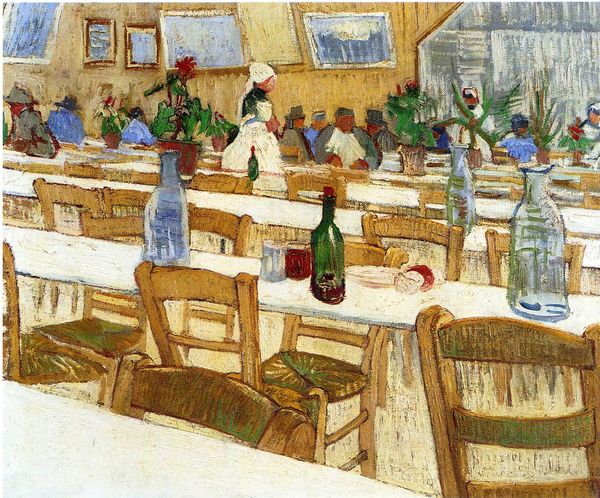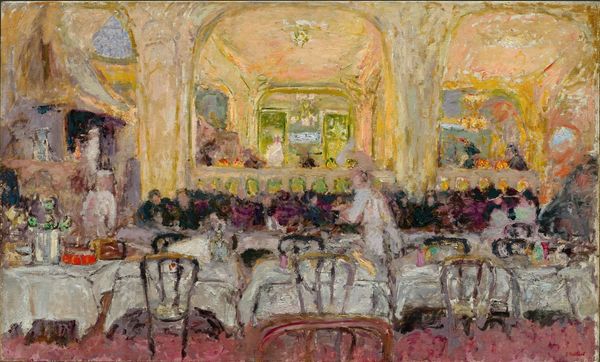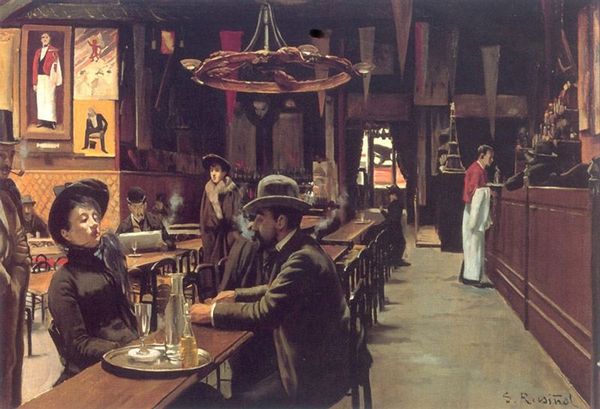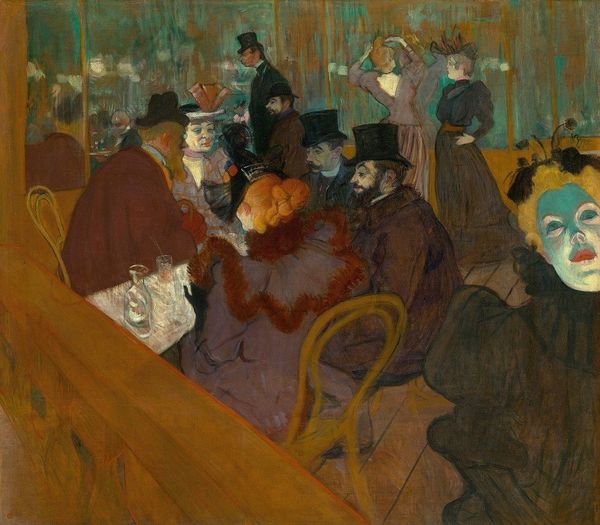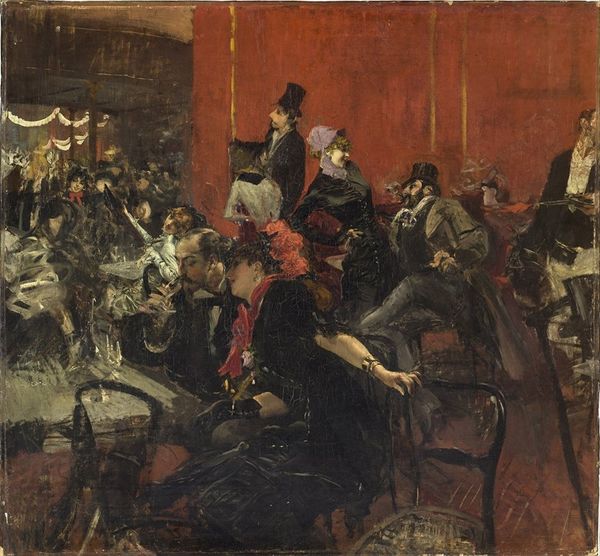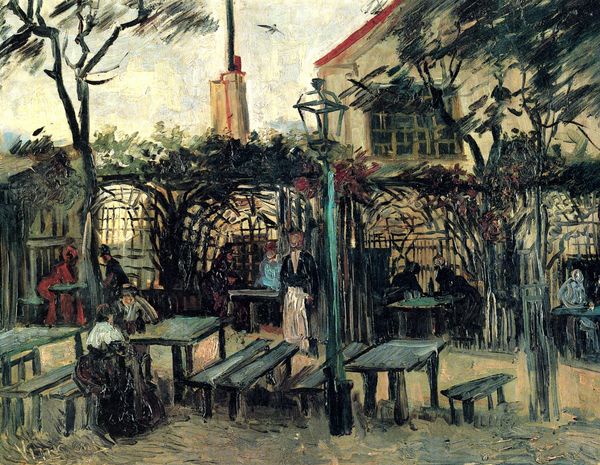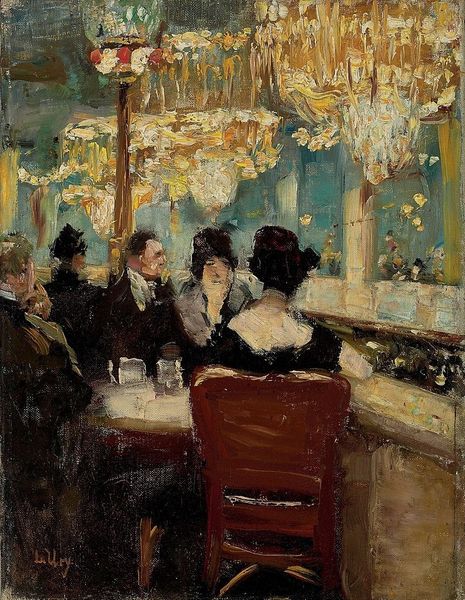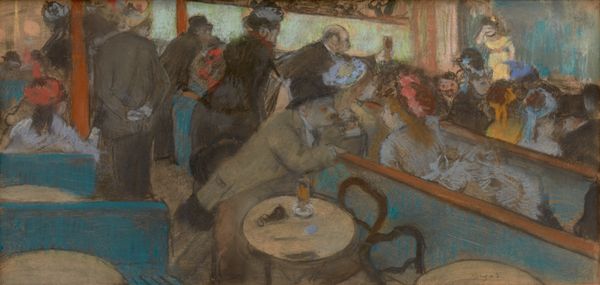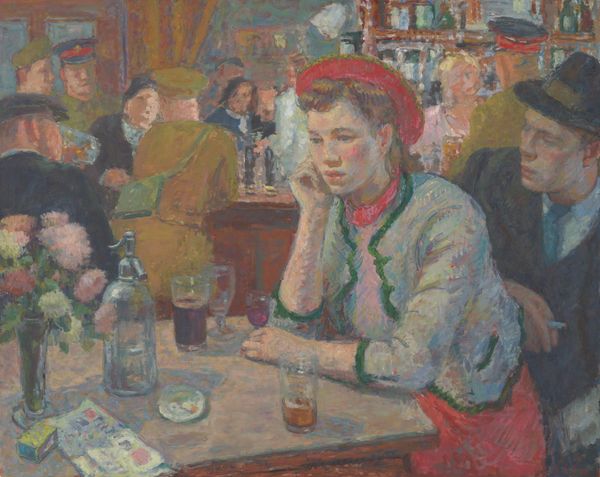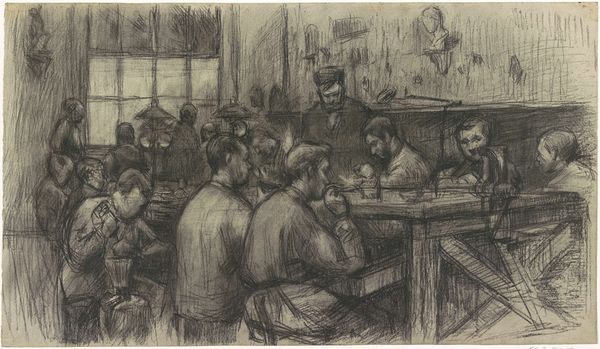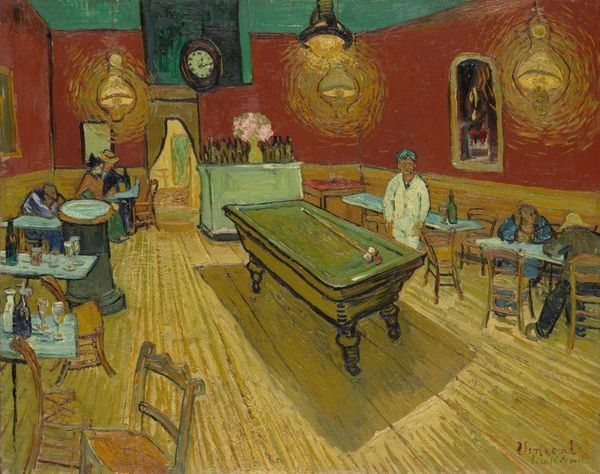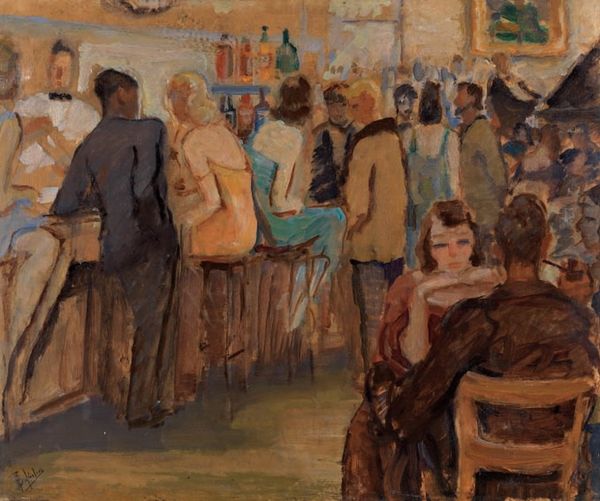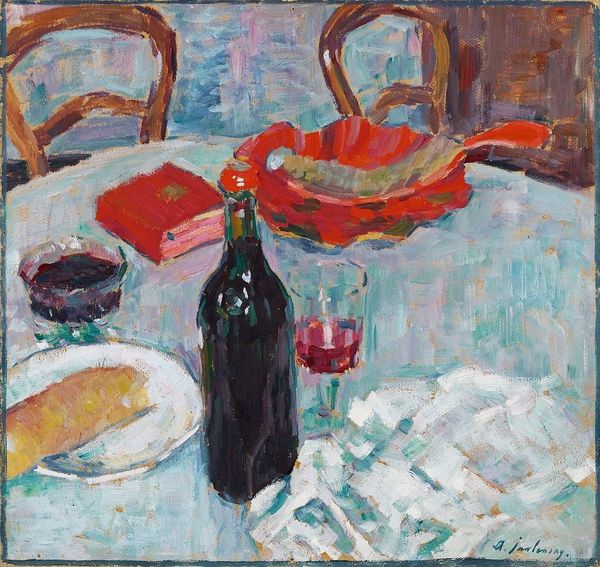
painting, oil-paint, impasto
#
narrative-art
#
painting
#
oil-paint
#
furniture
#
perspective
#
form
#
oil painting
#
impasto
#
genre-painting
#
post-impressionism
Copyright: Public domain
Editor: Here we have Van Gogh’s "Interior of a Restaurant in Arles," created in 1888. Painted with oil paint, the scene almost feels like a stage set, with the tables arranged so meticulously. What can you tell us about the ways Van Gogh’s process shapes our view of this space? Curator: Well, the first thing that strikes me is the labor inherent in both the scene and its creation. Consider the restaurant workers toiling to provide the meal being consumed, as well as Van Gogh himself, engaging in the physical act of applying paint. Think of the sourcing of materials -- the linseed oil, the pigments, the canvas itself, each connected to specific labor practices and markets. Editor: So you’re focusing on the…building blocks of the painting itself and connecting that to what's depicted? Curator: Exactly! Notice how Van Gogh’s thick impasto, the materiality of the paint itself, makes the tables feel weighty, almost monumental, while the bottles are reduced to simple, repeated forms. What does this imply about what Van Gogh prioritizes? It speaks to his recognition that every component from textile, ceramics to bottles have involved extensive processes and human agency. The repetition might indicate a mass production impacting individuality, with all objects serving their functions within society’s rituals. Editor: That makes sense. I guess I hadn’t considered the repetitive forms from that perspective. I was mainly looking at them in terms of compositional elements, not manufactured objects. Curator: Don't underestimate the influence of the burgeoning consumer culture of the late 19th century. What role might this seemingly banal interior and these everyday bottles have in commenting on the society he lived in? And in contrast to a pristine fine dining restaurant, Van Gogh is choosing a mundane establishment – suggesting what about labor and class? Editor: Right! Thinking about it as a specific space connected to specific labor helps contextualize not just the subject, but his methods, too. So, by looking at process, the material choices and applications of paint, you see this as more than just a scene - you can consider it social commentary! Curator: Precisely.
Comments
No comments
Be the first to comment and join the conversation on the ultimate creative platform.
